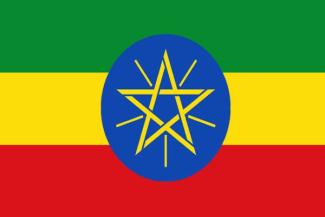Dashboard
Country Planning Cycles
Country national health planning cycles, health programmatic/project timelines and information on key partners.


Ethiopia
Main cycles
Health Sector Transformation Plan 2015-2020
Scheduled review of NHP
information not available
Annual Health Sector Review
October
Fiscal Start Date
July 8
Milestones
Executive branch: president indirectly elected by both chambers of Parliament for a 6-year term (eligible for a second term); election last held on 7 October 2013 (next to be held in October 2019); prime minister designated by the majority party following legislative elections
Legislative branch:House of Federation - last held 24 May 2015 (next to be held in 2020) House of People's Representatives - last held on 24 May 2015 (next to be held in 2020)
Legal System: civil law system
Programmatic Planning and Project Timelines
| Window | 20002040 |
|---|---|
| National Health Policy Strategy and Plan |
2015
2020
|
| National Development |
2015
2020
|
| Multi-Year Plan (cYMP) for Immunization |
2016
2020
|
| WHO Country Cooperation Strategy |
2013
2018
|
Partners in Country
Pooled funding and or SWAP
SWAp
UNDAF rollout cycles
2007-2011
PEPFAR focus countries
Yes
World Bank
This Country Partnership Strategy (CPS) for 2013-2016, builds on the progress achieved by Ethiopia during the past five years. It also aims to help the Government of Ethiopia (GoE) address ongoing challenges and assist in the implementation of Ethiopia's Growth and Transformation Plan (GTP, 2010-15). It covers the period from FY2013 to FY2016, one year beyond the GTP's implementation timeframe. As with the previous CAS it is a result-based strategy firmly anchored in the Government's program as well as the World Bank strategy for Africa. This paper is organized into four chapters. First chapter provides a brief political and economic context followed by a summary of achievements in key areas of economic and human development over the past decade. Second chapter presents the ongoing challenges faced by Ethiopia and the approach the Government is taking, as outlined in the GTP, to address them in the coming years. Third and fourth chapter focus on the World Bank Group (WBG) role in Ethiopia starting with a review of the past WBG assistance followed by a description of the key areas of the new partnership, its implementation and risks. Appendices and annexes provide additional information and statistics..
European Commission
Progress towards the MDGs and economic development in Ethiopia can be accelerated by supporting the expansion of basic services, and by fostering economic transformation that enhances competitiveness and regional integration. Therefore the EU current 10th EDF cooperation strategy with Ethiopia, as presented in the Country Strategy Paper for Ethiopia (2008-2013) , is built around three focal sectors: (i) transport and regional integration; (ii) rural development and food security, and; (iii) economic support and governance. In line with this orientation, a large part of the € 644 million national cooperation envelope is allocated to three large programmes:
The Productive Safety Net Programme (PSNP) that provides predictable cash and/or food transfers to the most food insecure population groups in return for participation in public works programmes;
The Roads Sector Development Programme (RSDP) that aims to improve the coverage and quality of roads infrastructure in the country; and
The programme for the Protection of Basic Services (PBS) that allows for the expansion and functioning of key basic services (health, education, water supply, agricultural extension and rural roads) at decentralised levels.
Ethiopia also benefits from various other EU assistance initiatives, including the Energy Facility, the Water Facility, the Food Facility, the Instrument for Stability, the Global Climate Change Alliance and the Instrument for Democracy and Human Rights. In combination, these programmes provide for a broad cooperation portfolio and an average annual assistance value of approximately € 160 million.
The Productive Safety Net Programme (PSNP) that provides predictable cash and/or food transfers to the most food insecure population groups in return for participation in public works programmes;
The Roads Sector Development Programme (RSDP) that aims to improve the coverage and quality of roads infrastructure in the country; and
The programme for the Protection of Basic Services (PBS) that allows for the expansion and functioning of key basic services (health, education, water supply, agricultural extension and rural roads) at decentralised levels.
Ethiopia also benefits from various other EU assistance initiatives, including the Energy Facility, the Water Facility, the Food Facility, the Instrument for Stability, the Global Climate Change Alliance and the Instrument for Democracy and Human Rights. In combination, these programmes provide for a broad cooperation portfolio and an average annual assistance value of approximately € 160 million.
Health Metrics Network Wave 1
Yes